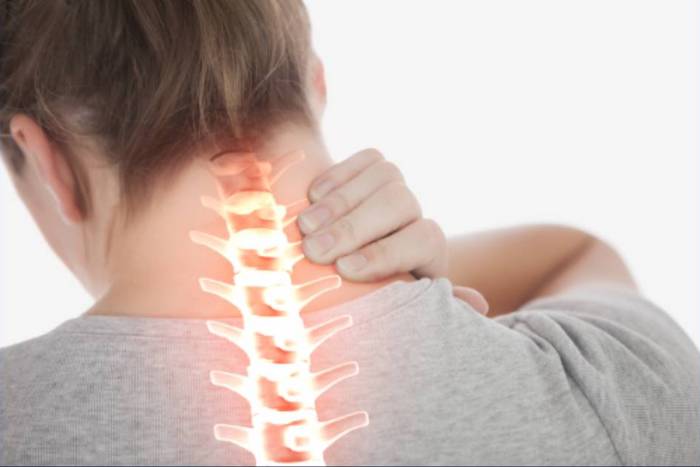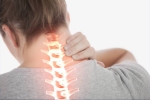
We’ve all experienced a neck strain when muscles become overstretched and painful, such as from overuse, sitting with poor posture, or sleeping with your neck in an awkward position. While a simple strain can cause sharp pain and a stiff neck that limits activities, it usually feels better within a few days. But what if neck pain is the result of a more serious underlying condition that doesn’t heal on its own? Here are a few ways to tell the difference.
Pain for Days vs Pain for Weeks
Distinguishing between pain caused by a strain and by a more serious condition can be tricky. Neck strains and cervical spine disorders, such as degenerative disc disease or osteoarthritis, are all capable of causing neck pain that ranges from dull and mild to severe and debilitating.
One key factor to note is how long the pain has lasted. Most neck strains start to feel much better within a few days or a couple of weeks. Underlying cervical spine disorders tend to cause pain that lasts longer than a few weeks, comes and goes, and may gradually become worse.
Local vs Radiating Pain
The location or movement of the pain can also be a distinguishing factor between a neck strain or an underlying cervical spine condition.
Neck strain pain is mostly felt on the site of the damaged soft tissues. Occasionally, the pain may be referred further up the neck or down to the top of the shoulders. But for the most part, neck strain pain stays local.
Pain from a cervical spine condition, however, can potentially radiate down the arm and even into the hand. This radicular pain occurs due to a spinal nerve root that has become compressed or inflamed, such as from foraminal stenosis or a herniated disc. When nerve root compression results in neurological deficits, such as numbness or weakness, it is called radiculopathy.
Radicular pain that goes into the arm may feel searing or shock-like, or it could feel achy or tingly. While radicular pain is usually felt on just one side of the body, it can occur on both sides.
Repeatable Neck Cracking
Most neck cracking and grinding sounds are normal and do not indicate any type of problem. When specific neck movements always result in a cracking or grinding sound, that could indicate bone on bone grinding and maybe more serious. For example, if rotating your head to the left always produces a clicking or grinding sound, an injury or chronic condition such as osteoarthritis may be the cause.
When to See a Doctor for Neck Pain
Most neck strains can be treated with rest and self-care, such as ice therapy, heat therapy, gentle stretching, massage, or over-the-counter nonsteroidal anti-inflammatory drugs (NSAIDs, such as ibuprofen or naproxen).
For neck pain that does not improve within a couple of weeks, visit your doctor.
If your neck pain resulted from a major collision or is accompanied by troubling signs and symptoms, such as radiating pain, tingling, numbness, and/or weakness that goes into the arm, see your doctor sooner rather than waiting.
A stiff neck accompanied by headache and/or fever could indicate meningitis, which is a medical emergency. Seek immediate medical attention.
Knowing the difference between pain from a simple neck strain and a serious injury can help you seek prompt treatment and avoid potential complications. Whenever in doubt, see a qualified health professional for an accurate diagnosis of your neck pain.
Precision Pain Care and Rehabilitation has two convenient locations in Richmond Hill – Queens and New Hyde Park – Long Island. Call the Richmond Hill office at (718) 215-1888, or (516) 419-4480 for the Long Island office, to arrange an appointment with our Interventional Pain Management Specialist, Dr. Jeffrey Chacko.













